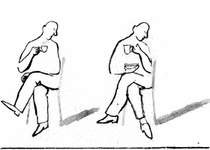- Dla kandydatów
- Dla studentów
- Informacje dla studentów I roku
- Informacje ogólne
- Informator o studiach
- Organizacja roku
- Zarządzenia Prodziekana ds. studenckich
- Kolokwia i egzaminy
- Prace i egzaminy dyplomowe
- Materiały dydaktyczne
- Pracownie
- Pracownia Projektów Studenckich
- Zespołowe projekty studenckie
- Oprogramowanie
- Konta i hasła w sieci studenckiej
- Studia doktoranckie
- Studia podyplomowe
- Samorząd, koła, kluby, chór
- Stypendia i sprawy socjalne
- Oferty pracy
- Dla pracowników
- Dla gości
- Badania
- Rada Naukowa Dyscypliny Nauki Fizyczne
- Kierunki badań
- Priorytetowy Obszar Badawczy II IDUB
- Realizowane projekty
- Sekcja ds. Obsługi Badań
- Seminaria i konwersatoria
- Konwersatorium im.J.Pniewskiego i L.Infelda
- Algebry operatorów i ich zastosowania w fizyce
- Środowiskowe Seminarium Fizyki Atmosfery
- Seminarium Zakładu Biofizyki
- Seminarium z fizyki biologicznej i bioinformatyki
- Seminarium Fizyki Ciała Stałego
- Multimedialne seminarium z ekono- i socjofizyki
- Exact Results in Quantum Theory
- Środowiskowe Seminarium Fotoniczne
- Seminarium Fotoniki
- Seminarium Zakładu Fotoniki
- Seminarium Gamma
- Seminarium "High Energy, Cosmology and Astro-particle physics (HECA)"
- Środowiskowe Seminarium z Informacji i Technologii Kwantowych
- Seminarium Fizyki Jądra Atomowego
- Seminarium fizyki litosfery i planetologii
- Seminarium Fizyki Materii Skondensowanej
- Seminarium "Modeling of Complex Systems"
- Seminarium nauk o widzeniu
- Seminarium "Nieliniowość i Geometria"
- Seminarium Optyczne
- Soft Matter and Complex Systems Seminar
- String Theory Journal Club
- Seminarium Koła Struktur Matematycznych Fizyki
- Seminarium "Teoria cząstek elementarnych i kosmologia"
- Seminarium KMMF "Teoria Dwoistości"
- Seminarium Teorii Względności i Grawitacji
- Seminarium "The Trans-Carpathian Seminar on Geometry & Physics"
- Seminarium Fizyki Wielkich Energii
- Konferencje
- Publikacje
- Research Highlights
- Optyka na Uniwersytecie Warszawskim
- Wydział
- Misja i strategia
- Władze Wydziału
- Zarządzenia Dziekana
- Zarządzenia Prodziekana ds. studenckich
- Struktura organizacyjna
- Historia Wydziału
- 90 lat Wydziału Fizyki
- 100 lat Wydziału Fizyki
- Fizykoteka – Wirtualne Muzeum Wydziału Fizyki UW
- Dziekanat
- Rada Wydziału
- Jakość kształcenia
- Stopnie i tytuły naukowe
- Nagrody Wydziału Fizyki
- Biblioteka
- Ośrodek Komputerowy
- Pracownicy i doktoranci
- Zamówienia publiczne
- Rezerwacja i wynajem sal
- Oferty pracy
- Osoby
- Zapraszamy
- Media
The Algebra & Geometry of Modern Physics
2013/2014 | 2014/2015 | 2015/2016 | 2016/2017 | 2017/2018 | 2018/2019 | Strona własna seminarium
2016-06-09 (Czwartek)
Paweł Smoliński (WFUW)
Moment maps, IV
Having defined invariant vector fields and orbits of the coadjoint action I will focus on reduction of the group manifold. If time permits I will present Marsden-Weinstein reduction with examples.
2016-06-02 (Czwartek)
Aleksander Strzelczyk (WFUW)
Moment maps, III
Having defined the moment map we will proceed to establish a link between the action of Lie algebra and the moment map. This will lead us to the cocycle condition, supported by examples.
2016-05-19 (Czwartek)
Aleksander Strzelczyk (WFUW)
Moment maps, II
Having defined the moment map we will proceed to establish a link between the action of Lie algebra and the moment map. This will lead us to the cocycle condition, supported by examples.
2016-05-12 (Czwartek)
Piotr Kucharski (WFUW)
Moment maps: part I
I will give an introductory talk setting the stage for the notion of the moment map. It will contain mainly definitions, examples and intuitions, which will hopefully serve for the following talks.
2016-04-28 (Czwartek)
Jacek Krajczok (WFUW)
Smooth action of a Lie group and the existence of a smooth manifold structure on the orbit space
During the lecture, we will be dealing with a smooth action of a Lie group on a smooth manifold. Our goal is a theorem which states that under additional assumptions on the action (it must be proper and free) there exists only one smooth manifold structure on the space of orbits such that the quotient map M -> M/G is a submersion. We will also prove some additional results concerning manifolds in general and those with a group action.
2016-04-14 (Czwartek)
Mariusz Tobolski (WFUW)
Principal bundles and gauge theory, part IV
We conclude our discussion of gauge theories in the language of principal bundles. The concept of gauge transformation will be introduced and some results highlighted in previous lectures proved.
2016-04-07 (Czwartek)
Mariusz Tobolski (WFUW)
Principal bundles and gauge theory, part III
Physical gauge theories can be described in the language of principal bundles. Connections on a bundle and local gauge transformations are then of most importance. After finishing our discussion of local sections and transition mappings from the previous lecture, we will focus on understanding gauge transformations using connection forms (potentials). The case of Dirac monopole will be given as an example.
2016-03-31 (Czwartek)
Mariusz Tobolski (WFUW)
Principal bundles and gauge theory, part II
Physical gauge theories can be described in the language of principal bundles. Connections on a bundle and local gauge transformations are then of most importance. After finishing our discussion of local sections and transition mappings from the previous lecture, we will focus on understanding gauge transformations using connection forms (potentials). The case of Dirac monopole will be given as an example.
2016-03-17 (Czwartek)
Mariusz Tobolski (WFUW)
Principal bundles and gauge theory, part I
I will introduce the category of (smooth) principal bundles. The motivation behind this concept comes from both mathematics (classification of fibre bundles) and physics (gauge theory). The difference between local and global triviality of the principal bundle will be discussed. I will also talk about transition functions and the reconstruction theorem.
2016-03-10 (Czwartek)
Tomasz Smołka (WFUW)
Lie groups: from algebra to differential geometry, part V
I will continue my presentation about properties of the Logarithmic Derivative. Next, I will also prove Automatic Smoothness Theorem for Lie Groups.
Stron 1 z 3







